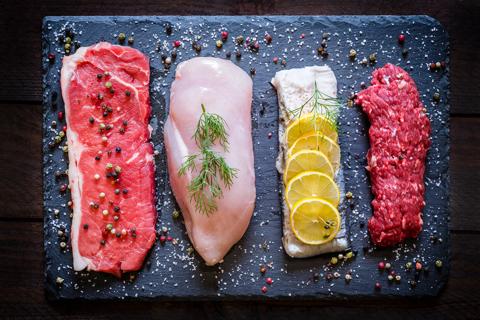A registered dietitian helps you navigate eating well

The good news: It’s cookout season! The bad news? Nothing derails a healthy diet quite like a party.
Advertisement
Cleveland Clinic is a non-profit academic medical center. Advertising on our site helps support our mission. We do not endorse non-Cleveland Clinic products or services. Policy
Registered dietitian Beth Czerwony, RD, dishes on how to indulge in the joy of the season without compromising your health — plus six healthy summer recipes you’ll love.
Nervous about your ability to pass up bowls of chips and platters of cookies in the heat of the moment? Eat something healthy before heading out the door, which decreases the likelihood that you’ll overindulge.
“If you show up hungry, you’ll have a harder time making good choices, and then you’re likely to end up overeating,” Czerwony says. “The biggest thing is thinking ahead and planning how you’ll stay healthy.”
You never know what is (and isn’t) going to be available at someone else’s potluck, so Czerwony suggests bringing a healthy contribution you know you can rely on — something to help you steer clear of the potato salad and the homemade cookies.
Whether you’re the host or you’re looking for a dish to bring along to someone else’s event, consider these healthy summer recipes that are totally cookout-friendly:
Advertisement
Want to keep it even simpler? No need to whip up something fancy: “I like to bring a vegetable platter with dip because then at least I know that those are safe options,” Czerwony says.
Before you hit up the food table, take some time to think through your approach and come up with a game plan for how you’ll fill your plate.
“If you can stand back and look at what’s being offered, you’re likely to make better choices,” Czerwony says. “You’re can figure out which foods you don’t really care about and what you really want to eat.”
And you don’t have to skip the unhealthy foods you love. Just prioritize the ones you want most, portioning them out and balancing them with healthier options.
When it comes to entrees, your healthiest option is lean, center cuts of meat, like loins and rounds. Steer clear of marbled meat, which indicates a higher fat content — but if the only cut available is fatty or heavy, try to decrease your portion size and increase the volume of your healthy sides.
Chicken can be healthy if it’s grilled, not fried; fish, seafood, and plant-based protein are good options, too.
Take it easy on the mayo-heavy “salads” that are so popular at picnics (think egg- and potato-based) and instead go for the green stuff, like crunchy, flavorful salads featuring nature’s bounty.
“The foods that are healthiest this time of year are the same ones you find in your garden,” Czerwony says. Here are her top picks for summer fruits and vegetables:
Still have room for seconds? It’s OK to go back for more. Just try focus your repeat visit on the healthier choices, piling your plate with carrot sticks instead of ruffled chips.
Hot weather can be dehydrating, so maintain your water intake throughout the day — ideally about 64 ounces a day, or four water bottles.
Sodas, juices, sports drinks and alcohol are all calorie-laden and, importantly for summer, they’re also less hydrating than water. Pure water is best, but if you want something hydrating with more pizazz, pop a little bit of that fruit salad into your H20 and infuse it with berries, citrus fruit or even cucumbers.
Advertisement
“That will jazz it up without adding extra sugars or artificial colorings,” Czerwony suggests.
Advertisement
Learn more about our editorial process.
Advertisement

With a focus on internal cues for hunger and fullness, this eating style may revolutionize your relationship with food

Review the ingredients, watch for sugar and fat, and choose one with the right amount of protein for your needs

A typical recommended balanced diet is half fruits and veggies, a quarter protein and a quarter grains

Foods high in protein, fiber and water can help keep hunger at bay

This quirky food trend is harmless, as long as you’re getting enough protein, fiber and healthy fats

This vital nutrient helps your brain and body in many ways — and most of us need more of it

Wrapped or sandwiched, try to choose fillings and condiments that are minimally processed, low in saturated fat and high in fiber

Set yourself up for success by carefully choosing your recipes, storage containers and prepping day

Babies can get congested easily, but you can calm their cough by keeping them hydrated, using nasal drops and running a humidifier

Weight loss may cause loose, sagging skin and muscle loss to your rear

Several conditions, like vitiligo and fungal infection, can cause a loss of pigmentation, leading to white spots or patches on your skin